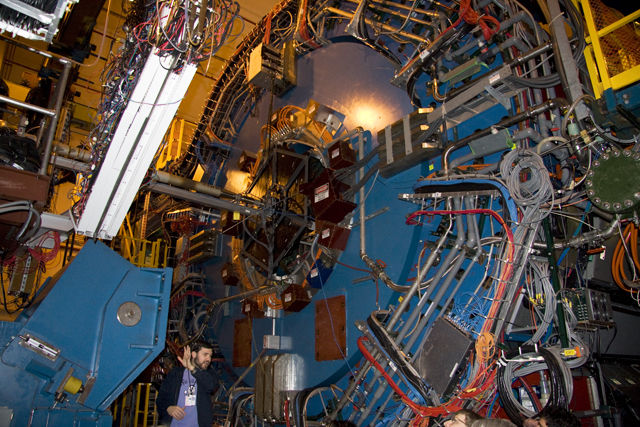But is that actually true? And, if not, could any difference explain why we're living in a matter-dominated Universe?
Finding out requires that we create and measure the properties and behavior of antimatter, something that's made challenging by its tendency to be annihilated on contact with the mundane matter of our testing hardware. Progress has been made in storing antimatter atoms in the lab and testing their properties.
But some new data on antimatter has come from an experiment that essentially creates it by accident.
The experiment is the Relativistic Heavy Ion Collider at Brookhaven National Lab. RHIC accelerates gold ions to high energies and relativistic speed and then smashes them together. The resulting energy not only gets converted to exotic particles (including antiparticles), but it breaks down the boundaries that keep quarks in tidy bundles like protons and neutrons. For a brief fraction of a second, the whole collision turns into a complex soup of interacting quarks and gluons.
As the collision debris spreads out and cools, these particles start to reform atomic nuclei and other complex particles. But, rather than that big, complex gold nuclei that went in, the atoms are simpler, mostly forms of hydrogen and helium. And, in many cases they incorporate exotic, heavy quarks or their antimatter counterparts. In the past, RHIC collisions have produced entire anti-atoms of helium.
The new paper focuses on relatively simple antimatter particles, the antiproton. By chance, pairs of these antiprotons can come spilling out of the collision debris close enough for them to interact. And, by seeing where the two end up, it's possible to judge the strength of those interactions, as well as the distance over which they can exert influence.
In the new paper, the team behind the STAR detector at RHIC measured these properties for both the protons and antiprotons produced by collisions there. And, when they compared the ratio of the values, it ended up being one for all but the lowest energies, where the error bars are large. That means the interactions are effectively indistinguishable whether the particles are protons or antiprotons.
While this isn't nearly so exciting as finding a large matter/antimatter difference, it's an important result to have for two reasons. The first is practical; our models of particle physics are run using the assumption that matter and antimatter behave similarly; it's nice to have experimental validation of these assumptions. But it also tells us that if we want to understand our Universe's matter/antimatter disparity, we'll have to look elsewhere.

No comments:
Post a Comment